Predicting Movie Sentiment End-to-End- From Code to Cloud
Movie Sentiment Prediction Microservice
In an era when audiences encounter thousands of film reviews every day, turning unstructured text into clear, actionable insights is a crucial skill. I designed and built a completely automated Movie Sentiment Prediction pipeline that applies modern data-science best practices and cloud-native deployments to transform raw reviews into sentiment scores—served through a high-performance, production-grade API. Below, I describe my motivations, architecture, key components, and lessons learned during development.
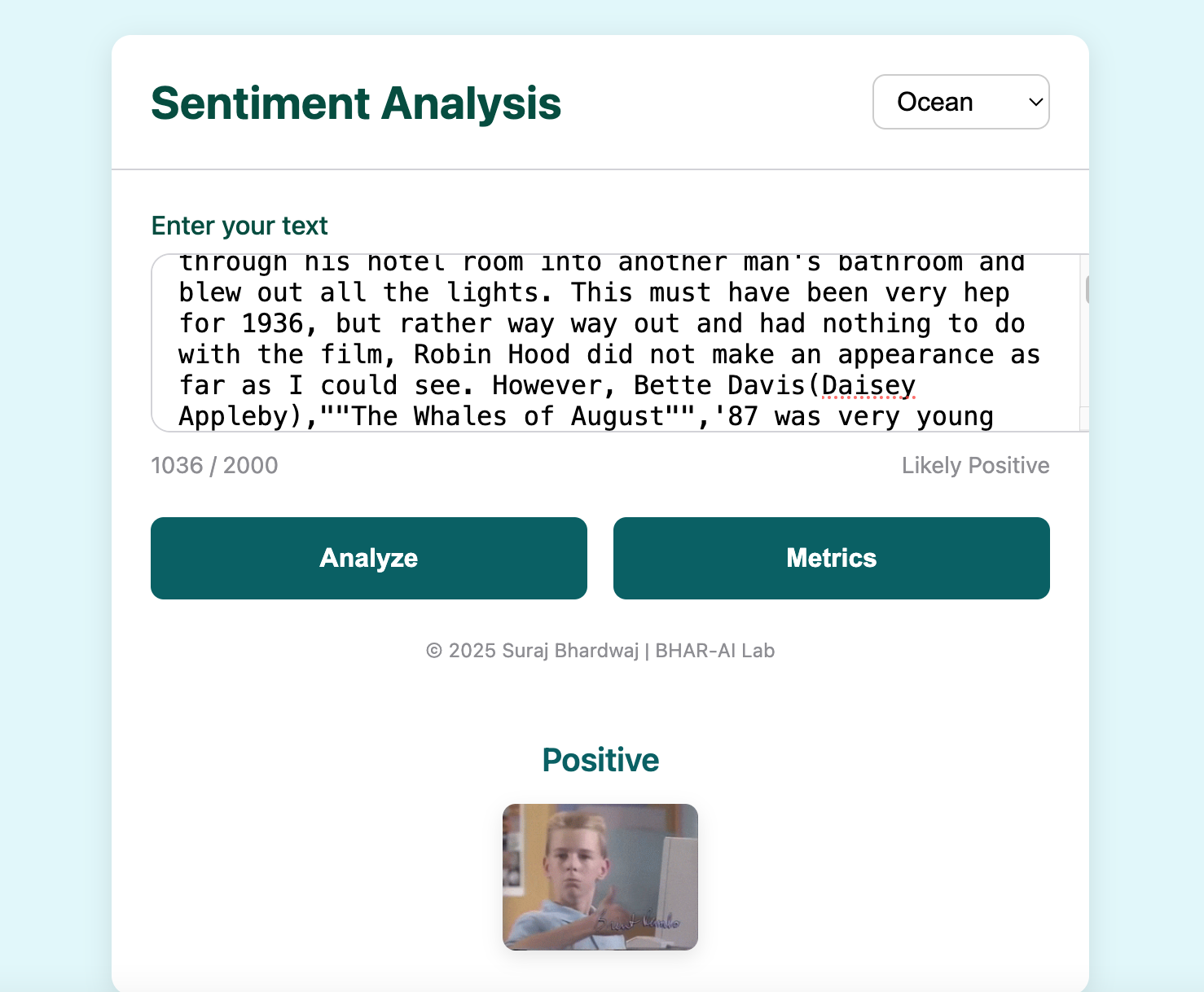
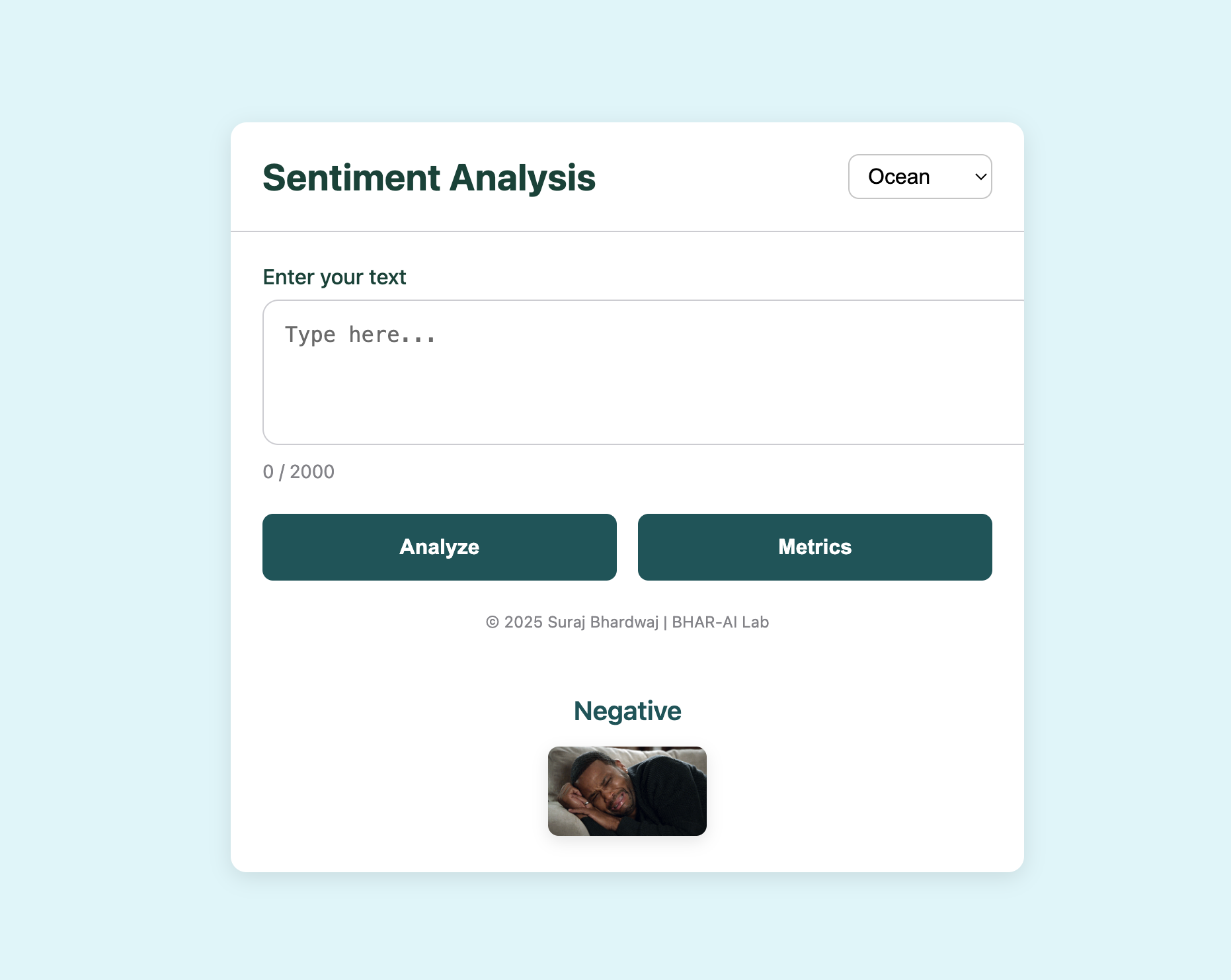
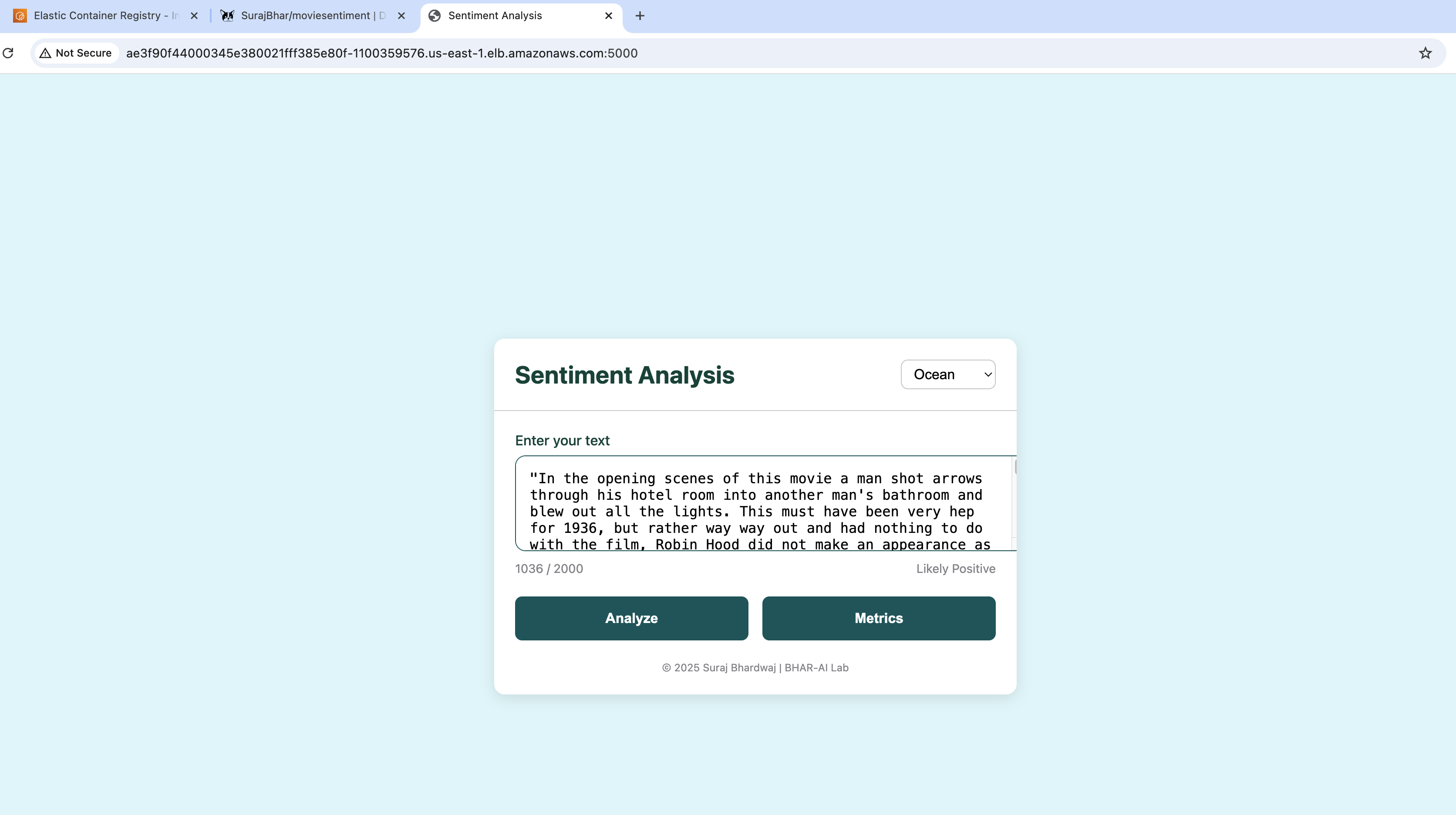
The Challenge: Unstructured Data Meets Production Demands
Movie reviews—from blogs, social media, and aggregators—are a gold mine of audience sentiment, but only if you can process them reliably at scale. Ad-hoc scripts and notebooks work for prototypes, but they break down when you need:
- Reproducibility across environments.
- Traceability of data, code, and experiments.
- Continuous deployment with zero-downtime updates.
- Real-time monitoring of performance and health.
My goal was to automate the entire machine-learning lifecycle—data ingestion through model serving—while ensuring every result can be audited, reproduced, and deployed with confidence.
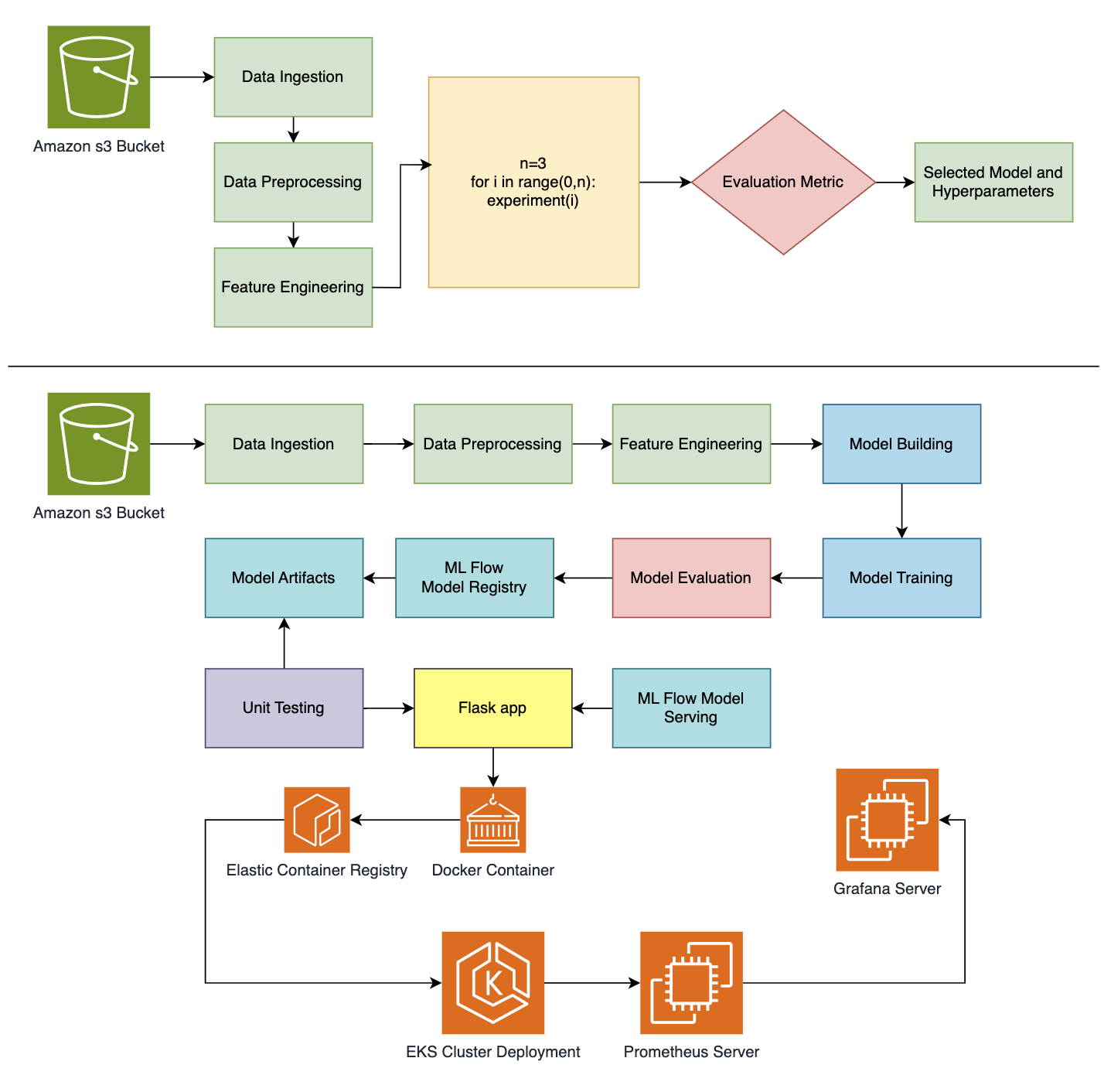
Building on a Solid Foundation
I started with DrivenData’s Cookiecutter Data Science template to enforce a consistent project layout (src/, data/, notebooks/, tests/, configs). Conda managed a Python 3.10 environment so all dependencies stayed in sync. Core modules in src/ break down each pipeline stage:
- Data Ingestion retrieves raw review text from CSV or API sources.
- Preprocessing cleans URLs, emojis, and stop words; normalizes punctuation.
- Feature Engineering tokenizes text, applies TF-IDF and Bag-of-Words, and computes lexicon scores.
- Model Building trains classifiers (Logistic Regression, Random Forest, XGBoost) with MLflow tracking.
- Evaluation & Registration compares metrics, selects the best model, and registers it in the MLflow model registry.
I defined every hyperparameter in params.yaml and orchestrated the workflow with dvc.yaml, guaranteeing consistent, reproducible runs.
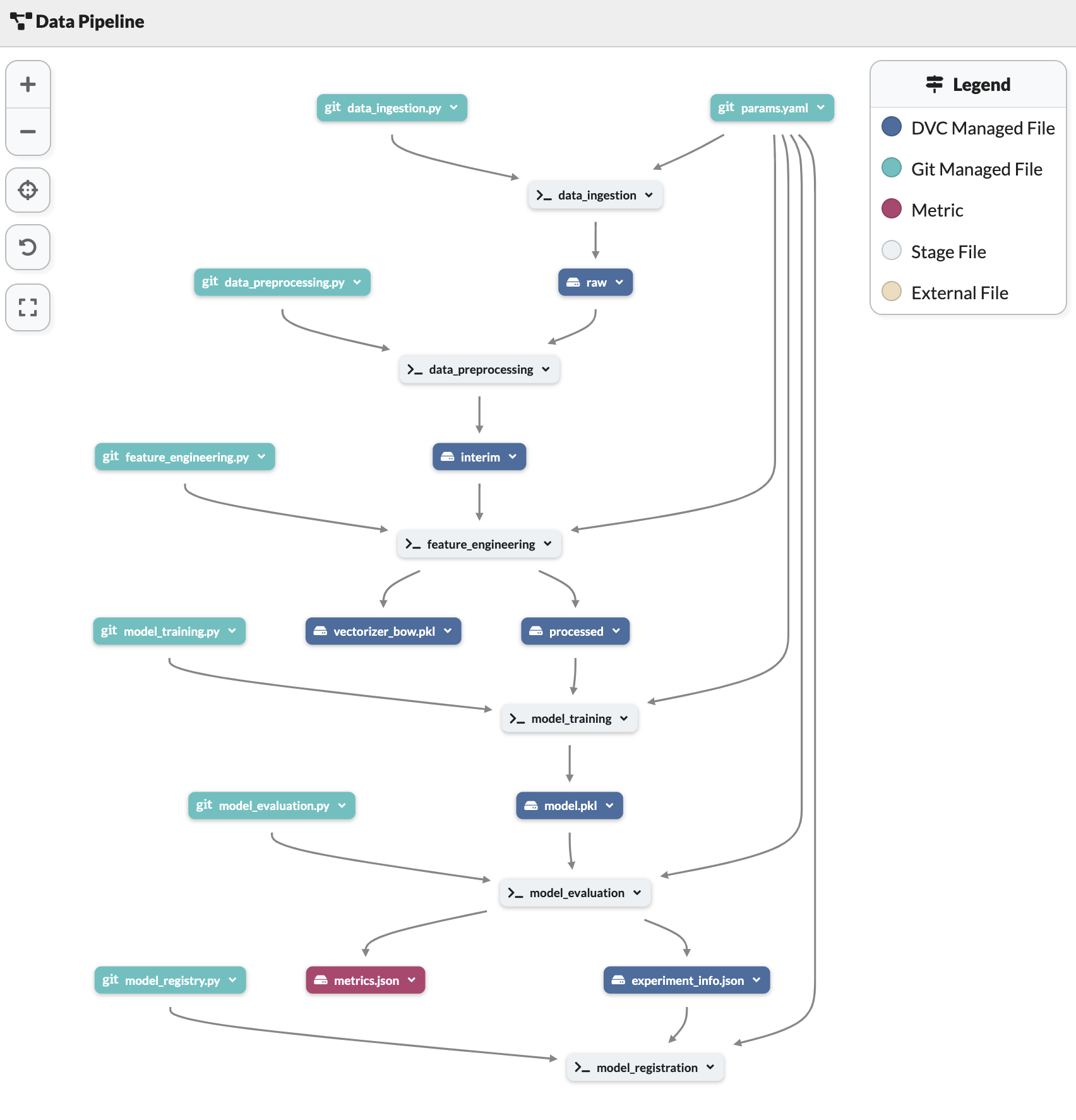
Quick Setup & Installation
#1. Clone the repository
git clone https://github.com/SurajBhar/moviesentiment.git
cd moviesentiment
# 2. Create & activate Conda environment
conda create -n senti python=3.10
conda activate senti
# 3. Install dependencies
pip install --upgrade pip
pip install -r requirements.txt
# 4. Run full DVC pipeline
dvc repro
# 5. Run Uni test on Model
python -m unittest tests/test_model.py
# 6. Promote model to Production
python scripts/promote_model.py --ci-cd
# 7. Run Flask app tests & Run flask app locally
python -m unittest tests/test_flask_app.py
python flask_app/app.py
# 6. Add Secrets to your Github actions secrets & variables
# Copy the secrets from the .env file (Add Your AWS credentials)
# 7. Setup your AWS account for deployment
# 8. Follow the ci.yaml file for deployment
- Login to AWS ECR
- Build Docker image
- Tag Docker image
- Push Docker image to ECR
- Create Kubernetes Secret
- Deploy to EKS
# 9. After deployment access the app at the 5000 port with External IP
- You can get your external ip using following command
- kubectl get svc <flask-app-service-name>
# An example: <Your External IP>:5000
ae3f90f44000345e380021fff385e80f-1100359576.us-east-1.elb.amazonaws.com:5000
Experiment Tracking with DagsHub & MLflow
To eliminate “it works on my machine” issues, I integrated MLflow with DagsHub’s hosted server. Every run—complete with hyperparameters, metrics, and artifacts—was automatically logged. DVC versioned the data and intermediate artifacts in a remote storage (initially local, then AWS S3), so I could branch or roll back experiments with a single command.

From Flask to Docker: Wrapping the Model in an API
Once the model was registered, I built a Flask microservice exposing a /predict endpoint. Incoming JSON payloads containing review text are vectorized and scored in milliseconds. I used python-dotenv to manage secrets (DagsHub token, AWS credentials) outside of source control. Local testing with:
export FLASK_APP=flask_app/app.py
flask run --port=5000
# Or run with python
python flask_app/app.py
confirmed that containerization would be seamless.
Packaging the service in Docker took just a few commands:
pipreqs flask_app --force
docker build -t moviesentiment-app:latest .
docker run -p 8888:5000 \
-e DGSHUB_TOKEN="<TOKEN>" \
moviesentiment-app:latest
The image then passed CI checks and was pushed to AWS ECR via GitHub Actions.
Scaling on Kubernetes with EKS
For resilience and auto-scaling, I deployed on Amazon EKS:
eksctl create cluster \
--name moviesentiment-cluster \
--region us-east-1 \
--node-type t3.small \
--nodes 1 --nodes-min 1 --nodes-max 2
My CI pipeline applied the Kubernetes manifests (deployment.yaml), launching two replicas behind an AWS Load Balancer. Within minutes, the service was live at a stable external IP.
Observability with Prometheus & Grafana
No production system is complete without monitoring. I provisioned two EC2 instances:
- Prometheus scrapes custom metrics (request count, latency, error rates) from the Flask app every 15 seconds.
- Grafana connects to Prometheus, displaying real-time dashboards and alerting on anomalies.
This setup provides immediate visibility into performance regressions and infrastructure health.
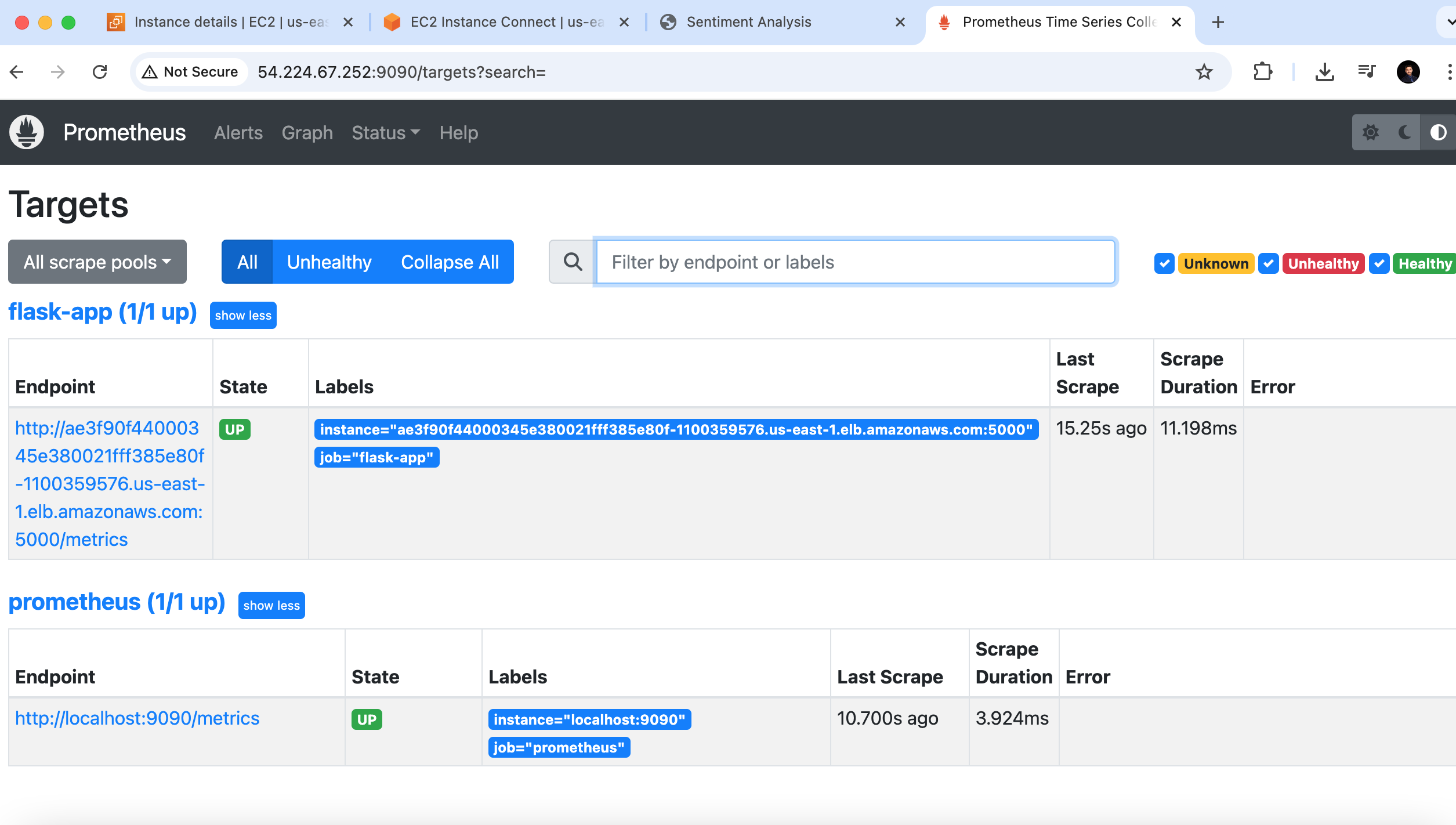
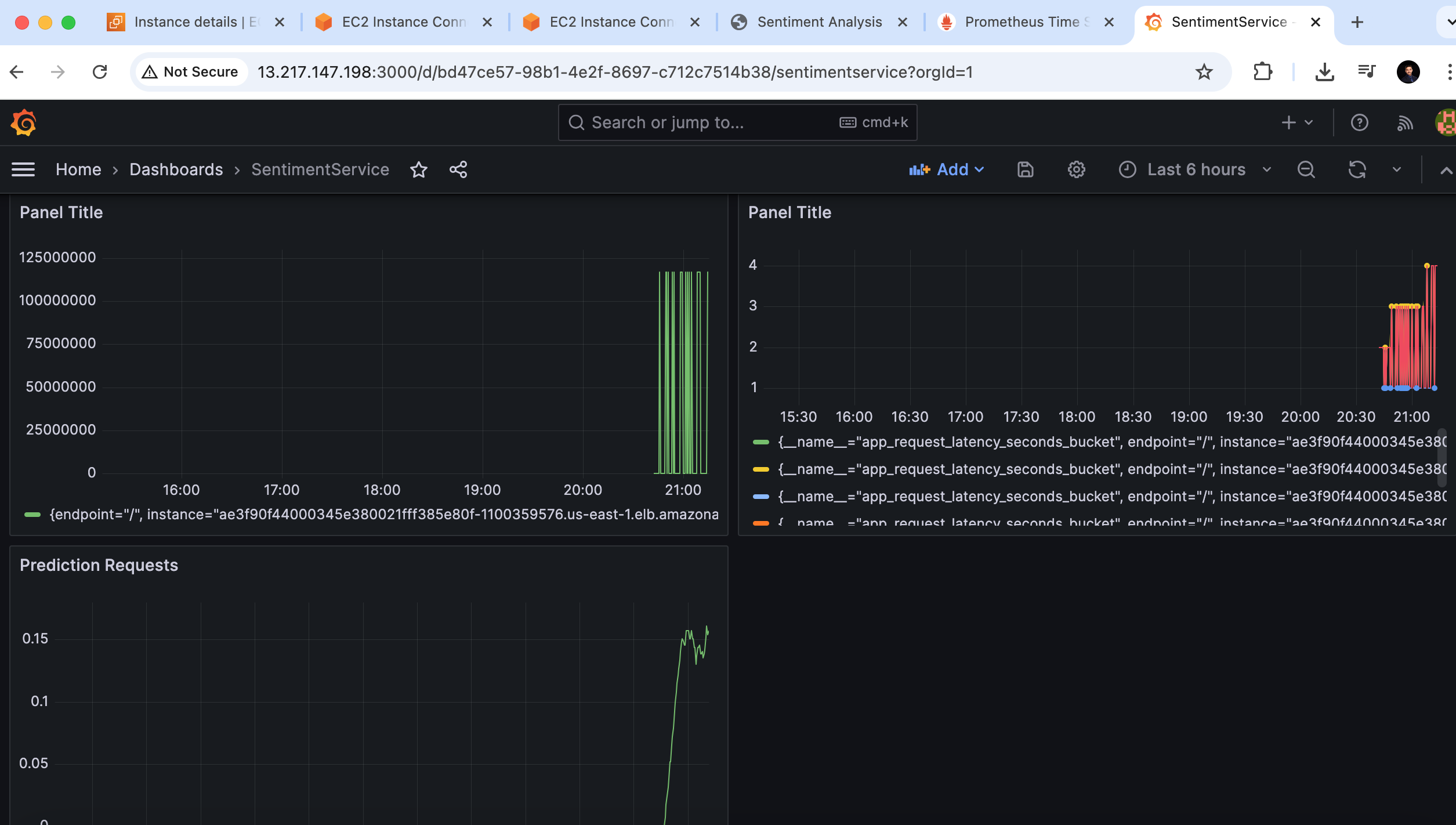
Lessons & Best Practices
- Modular Design Breaking each step into its own module simplifies testing and maintenance.
- Complete Versioning Pin environments (Conda), code (Git), data (DVC), and experiments (MLflow) to eliminate hidden drift.
- Automate Early Automating environment setup, data pipelines, and CI/CD frees me to focus on innovation.
- Infrastructure as Code Tools like
eksctland Kubernetes manifests turn cloud configurations into repeatable blueprints. - Built-in Observability Integrating monitoring from day one avoids firefighting surprises after deployment.
Conclusion
This Movie Sentiment Prediction project demonstrates how to build a fully reproducible, scalable machine-learning service—from raw data to cloud-native API—using industry-leading open-source tools. The end-to-end pipeline accelerates development cycles and guarantees the reliability and maintainability required for real-world production systems. As ML workloads grow more complex, such disciplined, automated practices will continue to be essential.